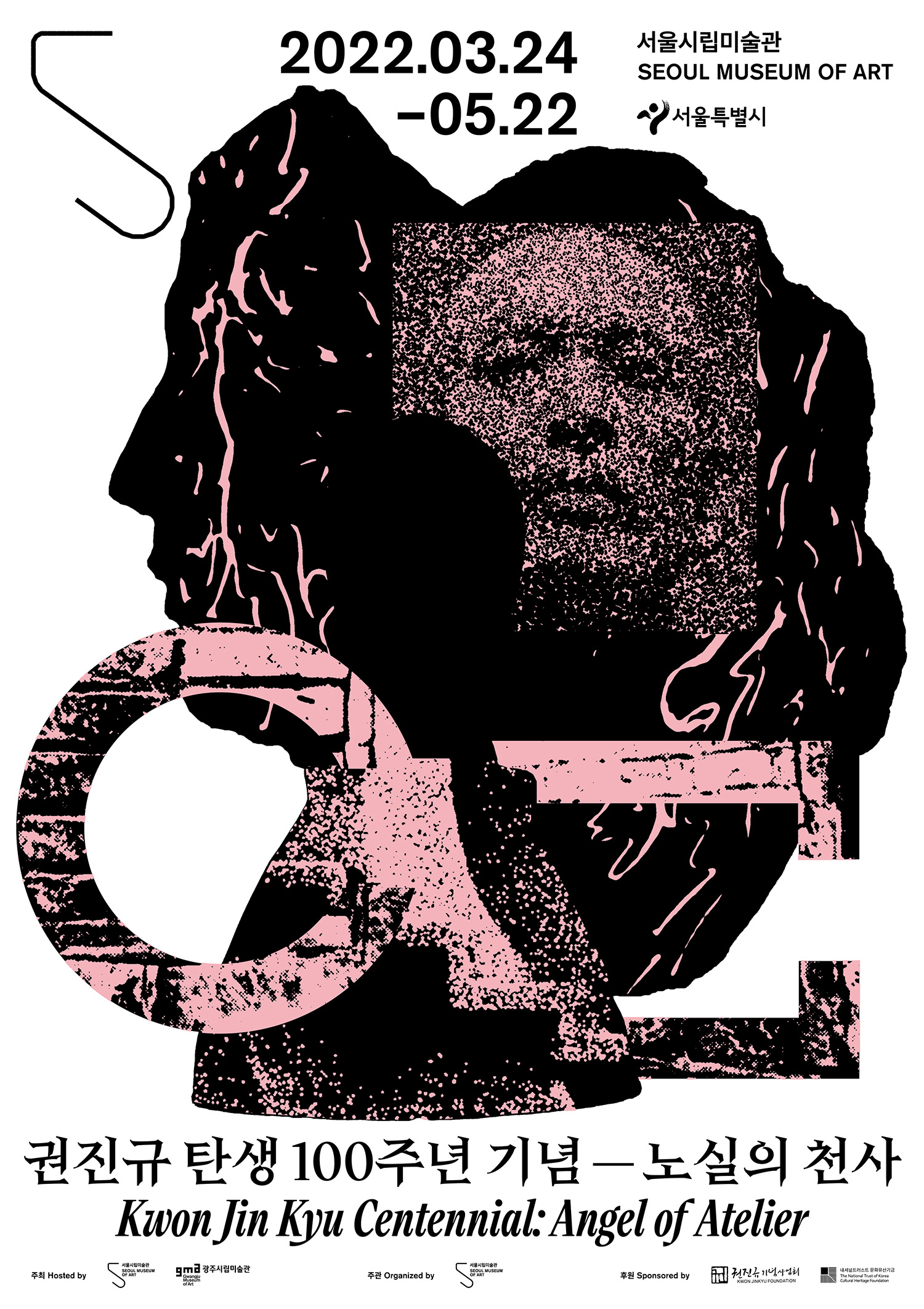
2022 marks the 100th anniversary of the birth of Kwon Jin Kyu, one of Korea’s pioneers of modern sculpture. In commemoration of the anniversary, an exhibition will be held at Seoul Museum of Art until May 22. The largest retrospective exhibition on Kwon held to date, visitors will be greeted to an abundance of articles related to the world of his art as it showcases 240 of his major works. The subtitle of the exhibition, Angel of Atelier, is derived from the title of one of Kwon’s own poems, “Artistic reflections: Spring, singing of Spring while creating Angel of Atelier,” and represents the pure spirit he ultimately sought to capture with his work. Kwon’s life and work come alive for visitors as they walk through the exhibition hall, which takes cues from a well and a kiln that were found in Kwon’s personal atelier.
Visitors entering the hall are greeted by dimly lit sculptures placed with apparent indifference on a long table, giving the impression that they are entering the artist’s studio that he just vacated. This departure is another way the exhibition sets itself apart from the usual composition seen in most galleries and offers an opportunity to appreciate the artist’s works up close and in great detail.
The exhibition unfolds according to different periods of Kwon’s life work, named Wander Forth, Self-Discipline and State of Enlightenment, echoing the Buddhist principals he lived his life by and the effect they had on his art practice. Wander Forth, the first section, consists of the works Kwon began to produce in the early days of his formal art education. Kwon moved to Japan to study at Musashino Art University, where he started what would become an illustrious career and soon received a special prize for his work with stone at the Nikaten Exhibition, one of the country’s most prestigious national art competitions. Kwon’s art was viewed favorably in Japan while he was there, calling his decision to express the world around him with a sense of classical realism beautiful, and there was great anticipation for his future. Although the works he created early on showed a focus on stone, he gradually adopted terracotta, or earthenware techniques, and, after diligent research, began to present works in the medium himself. This transition in his art is just as interesting to witness when visiting the exhibition.
The second section, Self-Discipline, exhibits works from the period after Kwon returned to Korea, built his own studio and set to work on terracotta. Although most people are familiar with Kwon for his busts of women, this exhibition shows that the artist created works in a wide variety of forms, including women, animals, reliefs, self-portraits, the Buddha and Jesus. Kwon’s works are also reminiscent of ancient Korean and Egyptian artifacts, a nod to his interest in elements of the primal and of the eternal and his pursuit of them in his works. The way in which he produced his works also reveals something about his personality: Many of the sculptures artists were producing at this time were made in bronze, but Kwon chose to work with terracotta as not only did he dislike the way the final step in working with bronze had to be completed by others, but he was also attracted to terracotta, long used in ancient burials, because it can last over 10,000 years without deteriorating.
Viewers come face to face with the works from the last period of Kwon’s life in the final section, State of Enlightenment. The artist’s international exhibitions and work with statues foundered in his later years, and became frustrated with the Korean art world that embraced abstract art as the mainstream. Kwon Jin Jyu took his own life at 52 years old. The artist exhibited a tendency to move beyond strict reproduction of his chosen subjects and emphasize their inner spirit, creating works that exude a novel type of introspection around existence and emphasize three-dimensional form and volume that capture the vitality of his subject matter. His art introduces a unique world unbound by trends in Korean sculpture and ends up feeling like works of mythic enlightenment as produced alongside his own life, reminding viewers of the depth of his anguish as he experienced it.
-
 ©️ Seoul Museum of Art
©️ Seoul Museum of Art
TRIVIA
The dry lacquer technique
A technique in which lacquer is applied to ramie or hemp cloth to form a base. Resistant to insects and corrosion, the method was chiefly used in the production of tableware and Buddhist statues. The term was coined in modern Japan and can be classified into different methods such as the hollow, wood-core and wooden dry lacquer techniques. Until Kwon worked with it, dry lacquer had never been used in Korean fine art.
Unauthorized reproduction and distribution prohibited.
- Dalí to Magritte2022.04.01

- [NoW] Alice Dalton Brown2021.09.24

- [NoW] Thoughts on people today2021.11.19



